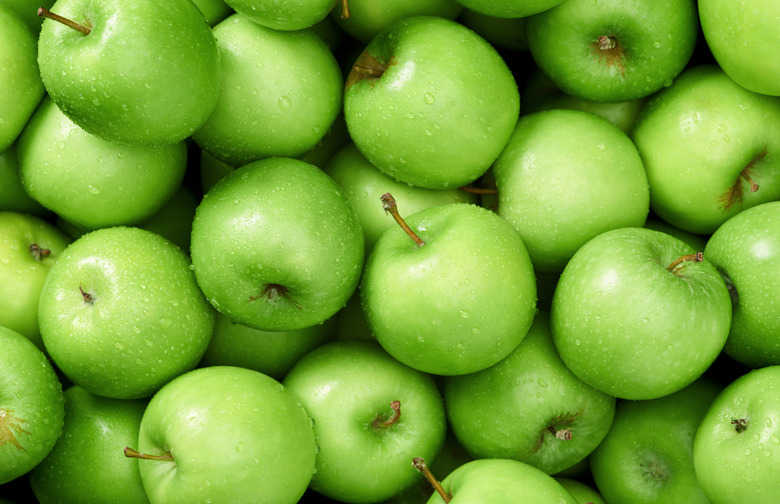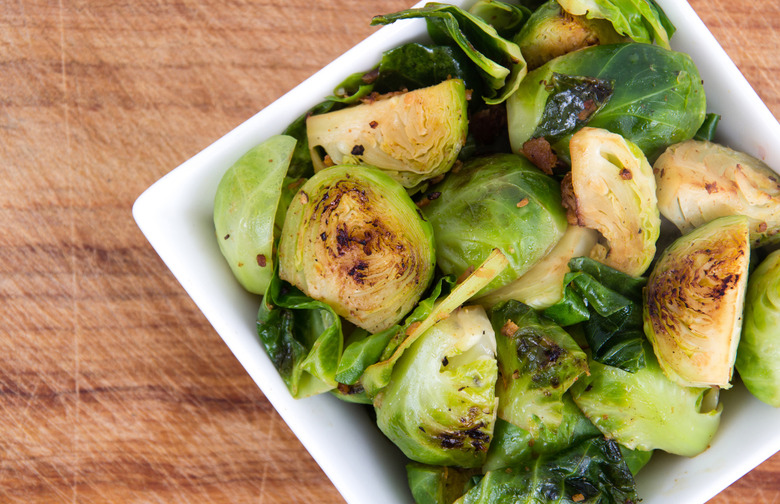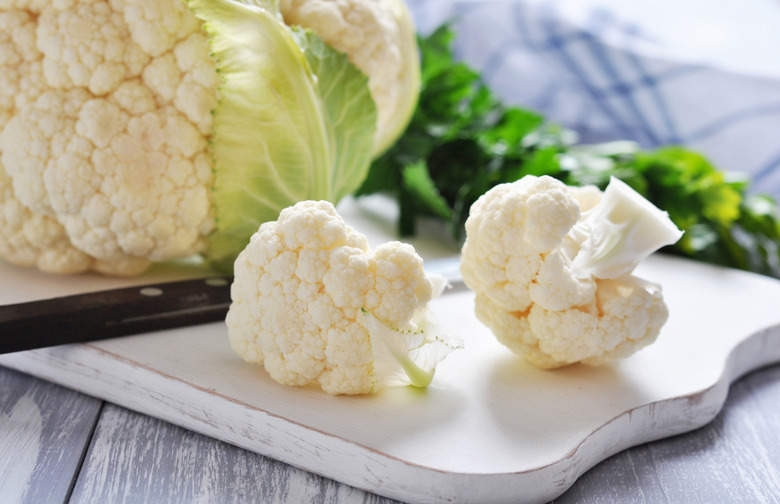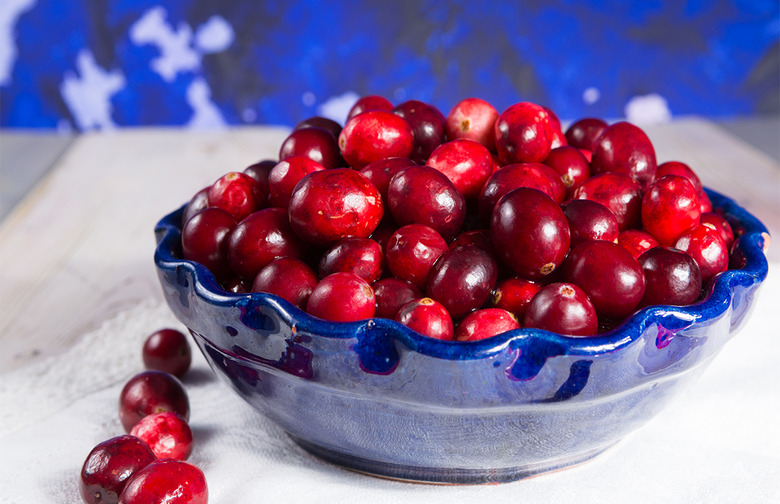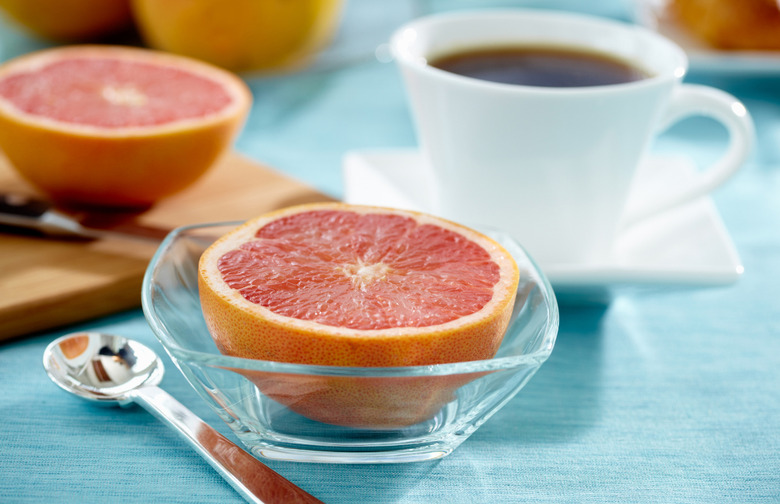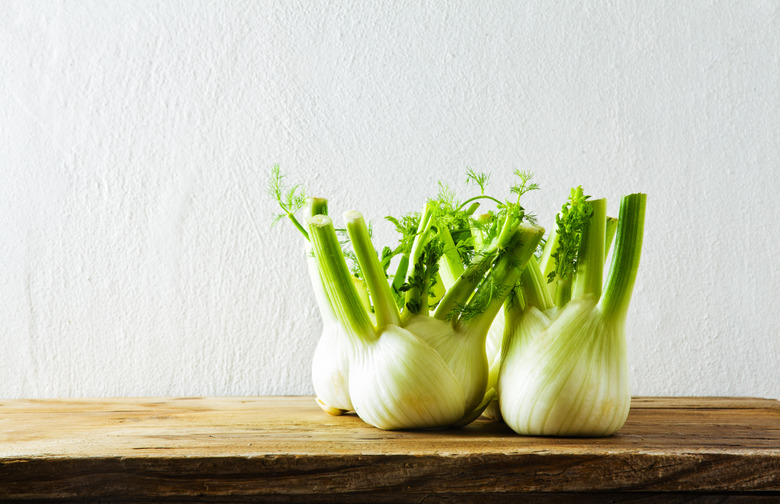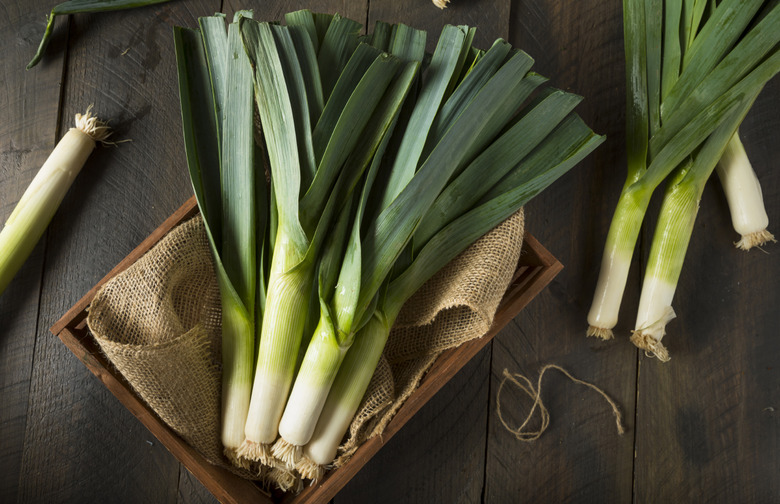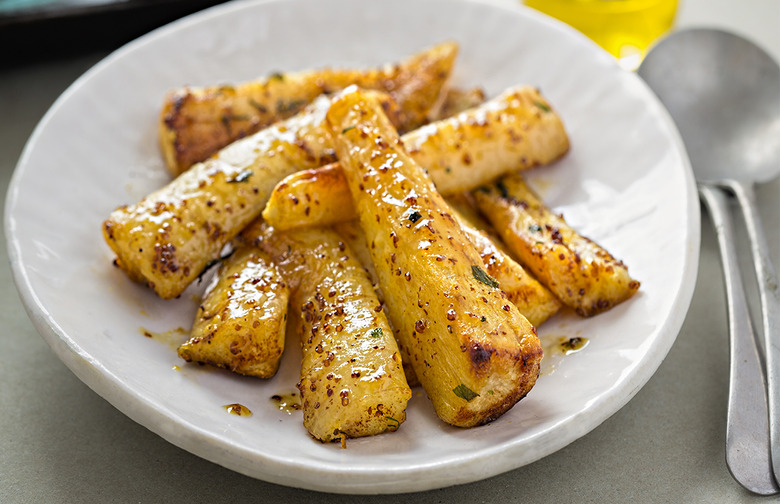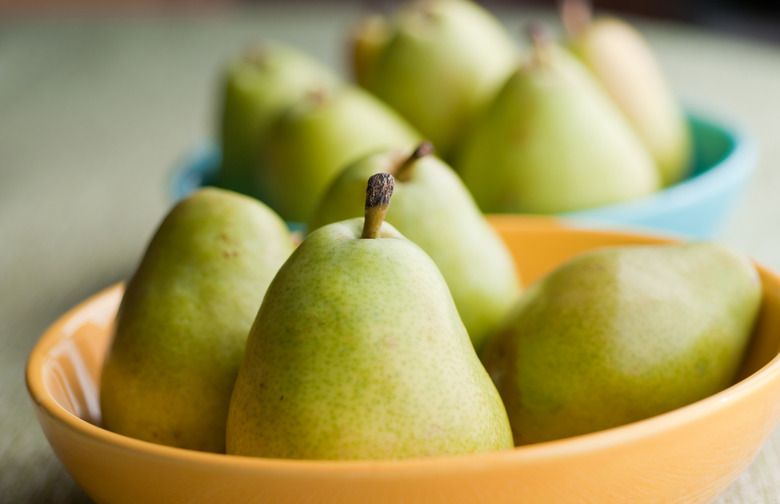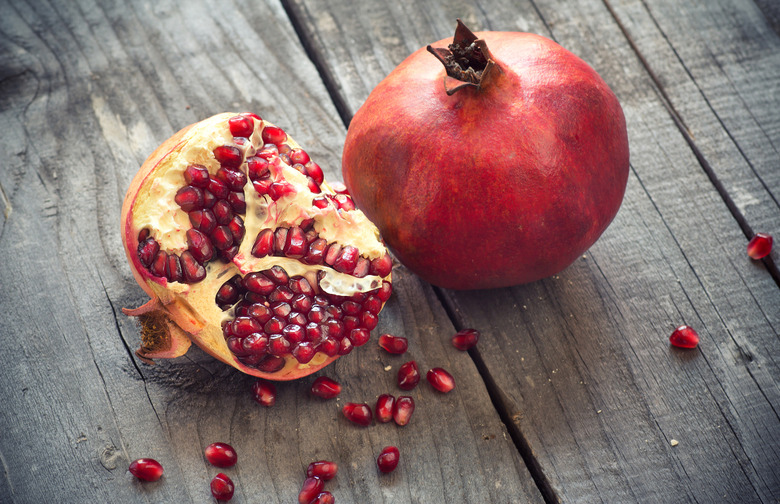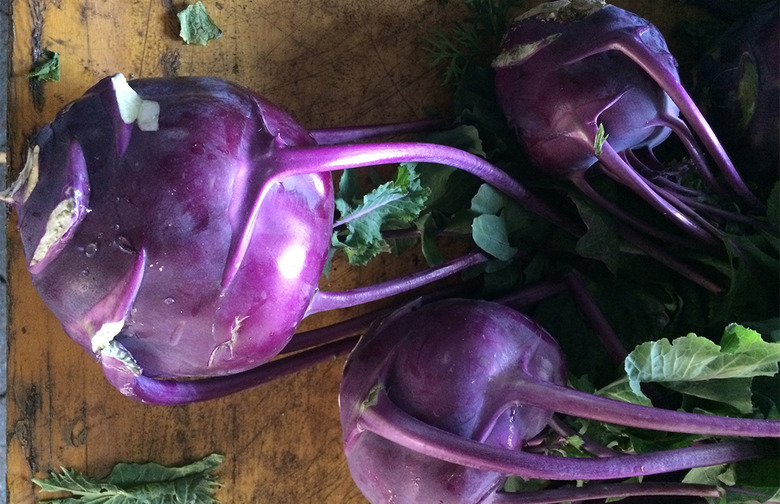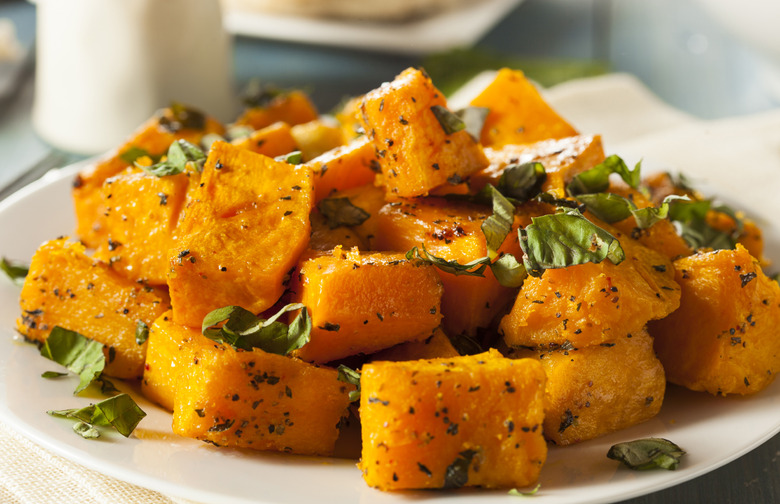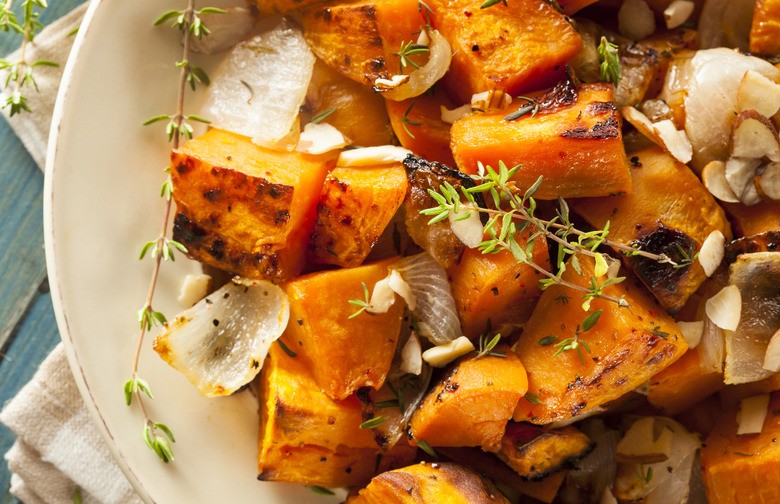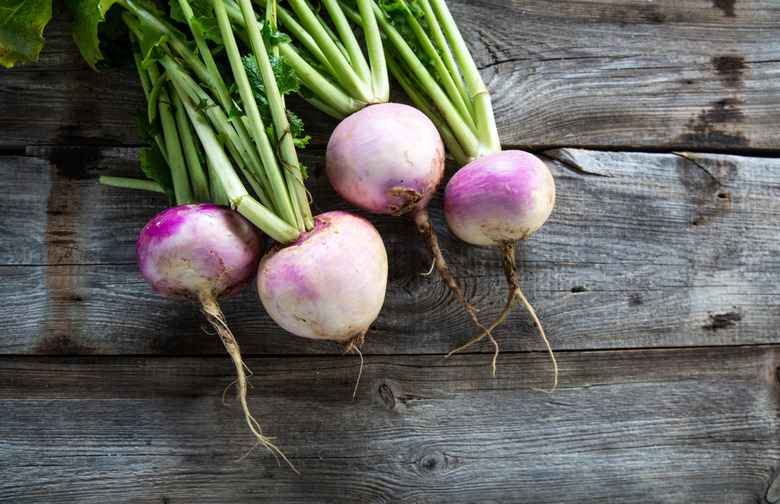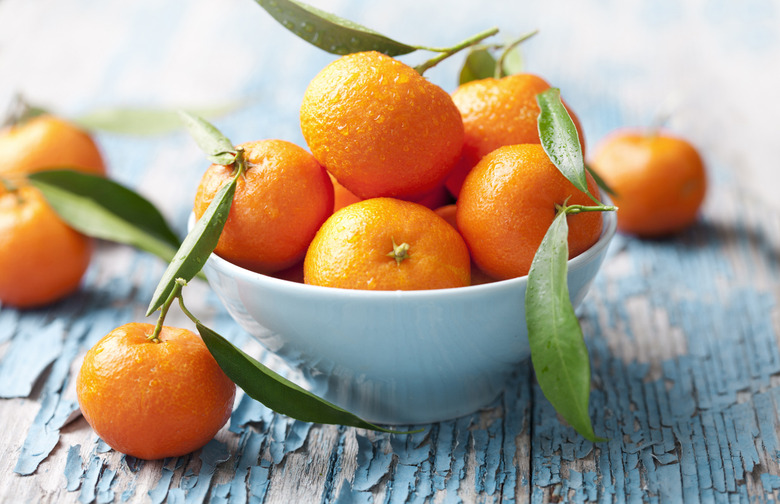15 Fall Superfoods You Need To Eat Right Now Slideshow
Fall is upon us, and with it the gusts of wind, end-of-summer sniffles, and cravings for creamy and cozy pasta. While curling up with a big bowl of Alfredo sounds undoubtedly delightful, there are lots of fruits and vegetables in season that could spruce up your carb-heavy dish.
When you think "fall," you don't necessarily think fruits and vegetables. The season lacks the bountiful fruits of spring and misses out on all the tomatoes, corn, and other summer veggies of the warmer season. However, we think fall produce is seriously underrated. There are lots of things still in season, and while some of them might not be as obviously sweet or in-your-face fantastic, give them a little love and they taste absolutely amazing.
They make you feel amazing, too — that's thanks to their superfood status. Each fruit and vegetable on this list is loaded with enough vital nutrients to classify it as a superfood. Learn which to watch for in the store and how to cook with each of these foods.
Apples
The saying really should be "an apple a day keeps the boredom away", because there are so many delicious ways to eat this fruit. Besides the endless thrills and cider doughnuts that come with apple picking, apple season opens up hundreds of sweet and savory recipe possibilities.
This basic fruit is a superfood due to its intense nutrient profile; it contains tons of antioxidants and fiber.
Brussels Sprouts
Kids might hate them, but if you cook them the right way, they can be truly incredible (we recommend you add bacon). Roasting them or combining them with a savory sauce can make these fibrous, cruciferous vegetables much more palatable. They're worth the effort — they have vitamin K, folate, iron, and more.
Cauliflower
It's the hip, cool vegetable of 2017, and for good reason. If you're repurposing the florets to imitate pizza crust, rice, or another comforting carb, you can be sure you're getting vitamin C and cholesterol-lowering phytonutrients. If you love your carbs just as they are, you can also make a great, wintry side dish with the vegetable simply by roasting it with some spices. We recommend immune-boosting turmeric!
Cranberries
The canned sauce is a Thanksgiving staple, but a great low-sugar option is to cook with the fresh ones yourself. Whip up one of these clever cranberry recipes or make cranberry wine. The tart-tasting fruits are great for your gut and loaded with essential nutrients. The antioxidants can help fight cancer and inflammation. There's no reason to wait until late November — start cooking with cranberries right now.
Grapefruit
'Tis the season for tart fruit, apparently — but, like cranberries, grapefruit can taste delicious if you cook it right. Broil your grapefruit after sprinkling with some cinnamon and sugar. The fruit has been shown to help lower blood pressure and even improve your heart health.
Fennel
Fennel is a flavorful addition to any fall dish — but it adds more than flavor. It has vitamins, minerals, fiber, and even protein. After buying the large bulbs and stalks, simply shave off pieces of the plant to sprinkle over a salad or roast the bulb in chunks.
Leeks
They might sound like something you'd only eat if you were relying on tasteless war rations, but a bland soup isn't the only way you can eat leeks. They're actually a nutritious addition to dozens of decadent dishes, including lamb, pizza, and even dessert. They're a member of the plant family that includes onion and garlic, so they pack a lot of unique flavor.
Parsnips
They come from the same family as the turnip, but they're not as harsh in flavor. Parsnips are easy to enjoy, whether you add them in a salad or fry them into low-carb French fries. You can also roast them into a flavorful side dish. The fall vegetable is a great source of vitamin C, folate, and manganese, which can help boost your mood once the weather gets chilly and dark.
Pears
If you're bored of apples, it's time to pick a pear. It's the pear-fect fruit for fall since it contains some of the most under-consumed nutrients in America according to the Dietary Guidelines for Americans, including potassium and vitamin C. Here are five new ways to enjoy the fruit this month.
Pomegranate
Perhaps the most underrated fruit in history, pomegranates are rumored to be the true forbidden fruit of the Bible instead of the immensely popular apple. It has aphrodisiac properties and adds a delightful zest to any fall smoothie. There's more than one reason we think it's the most seductive fruit of them all. It has antioxidants, fiber, and dozens of vitality-boosting nutrients.
Rutabagas
This food is immensely popular in Sweden — maybe that's why the Swedes are so healthy? They're an excellent source of vitamin C, potassium, manganese, and more. Rutabagas are kind of a cross between a cabbage and a turnip, and make a surprisingly satisfying addition to stew.
Squash
These gourds are basically the hallmark of the fall season. Pumpkins, butternut squash, and spaghetti squash are all seasonal delights that open up endless culinary possibilities. Peeling and cutting the squash is the hardest part, but we've got some hacks for you that make it way easier. It's fibrous, it's festive, and it tastes really freaking good. And hey, if you're too intimidated to buy the whole thing, you could always resort to a can of pumpkin. We hear it makes some decadent desserts.
Sweet Potatoes
We indulge in these tubers year-round, but they're about to get a whole lot cheaper. While regular potatoes are also perfectly healthy vegetables, sweet potatoes are a tasty alternative. This might be the greatest part about the fall season — not only are these potatoes delicious and versatile, but they also help our eyesight, provide a hefty dose of complex carbs, and pack lots of fiber.
Turnips
It's time to turn up, because turnips are back in season — and there are lots of ways we're excited to cook with them. Turnip mash makes a lower-carb alternative to mashed potatoes without missing out on flavor. The vegetable can also add a much-needed boost of fiber to an otherwise hearty stew.
If you do cook with them, don't toss the leaves — they add a sharp, mustard-y flavor to any dish.
Tangerines
They're a bit smaller than an orange and just as flavorful. Bump up your vitamin C this flu season with this tangy fruit! These other 10 foods will also help you get through your fall allergies.

